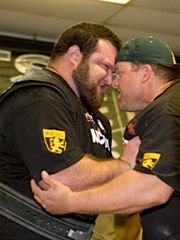 I once saw an interview with Gene Wilder that included the idea 'you only fight hard for the things you really believe in'. In that case, powerlifter Chad Aichs is most certainly Hardcore.
I once saw an interview with Gene Wilder that included the idea 'you only fight hard for the things you really believe in'. In that case, powerlifter Chad Aichs is most certainly Hardcore.
Results matching “Bird”
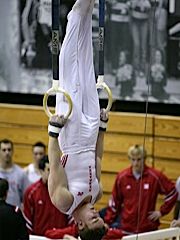 I love Charles Poliquin's Question of Strength columns, and the October edition is certainly no exception. The importance of shoulder training, the 'lose fat and gain muscle' debate and a whole lot more. A great read.
I love Charles Poliquin's Question of Strength columns, and the October edition is certainly no exception. The importance of shoulder training, the 'lose fat and gain muscle' debate and a whole lot more. A great read.

The first wrestler I can clearly remember watching - the truly unique George 'The Animal' Steele.
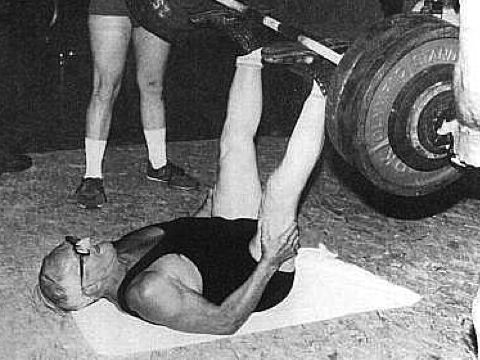 Wow, it's been a busy week here at Straight to the Bar. For your enjoyment :
Wow, it's been a busy week here at Straight to the Bar. For your enjoyment :
- Articles : Ever wondered just how well your grippers stack up? Take a look at Jedd's piece on The Gripper Hierarchy. The incredibly inventive Jason Kirby discussed 29 superb barbell-against-a-wall exercises, and I shed some light on the mysterious kettlebell.
- Videos : The Diesel Crew showed off several Advanced Pull-up Variations, Johnny Mnemonic (of Squat RX fame) demonstrated some Westside Basics and Anthony DiLuglio detailed the benefits of the kettlebell towel (or t-shirt) swing.
- Equipment : Ever tried Splitboarding? Here's what it's all about. Mark Reifkind shows how to get serious with a Foam Roller, and I stumble across the ROM. A very unusual piece of equipment.
- Ideas : Dust off the treadmill (Troy M. Anderson explains why), pick up a couple of plates the hard way and learn a bit of Muay Thai. Good stuff.
- Bonus : Over on the Diesel Crew site, Mike Davis takes a look at The Essence of Bulletproofing [.84kb, .pdf]. A great read.

Strongman Ed Zercher performing an unsupported leg press.
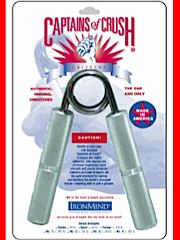 Have you wondered: What is the hardest gripper? Where do my grippers lie? What grippers can I get to bridge the gap between what I am closing now and my goal gripper?
Have you wondered: What is the hardest gripper? Where do my grippers lie? What grippers can I get to bridge the gap between what I am closing now and my goal gripper?
Questions such as these are why you have to join THE GRIPBOARD. Everything regarding Grip Strength has been discussed. If there is something that hasn’t, then you should bring it up.
In most cases, all you have to do is use the search function and you get what you need.
Recently, a member on the Gripboard, Sultan_of_Spin, dug up a gem of a thread, originally started by Stalwart Sentinel. Within the post was the succession of Grippers from the easiest, the IronMind Guide, to the toughest, the RBWT (Robert Baraban's World's Toughest).
Here is the hierarchy according to Stalwart Sentinel’s research. Take in mind that grippers with the same name can vary. For instance, due to changes made in spring material, the original Heavy Grips 300 I have is much tougher than the newer one I have. Still, even with variance in mind, this is an excellent list to base your purchases and training choices upon.- IM Guide 60 lbs
RB70
IM Sport 80 lbs
HG100
.225 BB Beginner 100 lbs
HG150
.225 COC T 100 lbs
RB130N
RB100
RB160N
RB130
RB180N
.235 BB Advanced 140 lbs
.235 COC #1 140 lbs
HG200
.241 COC 2004 #1 153 lbs
PDA243
.250 COC 2006 #1.5 168 lbs
.250 BB Super Advanced 173 lbs
GM1 cert gripper
RB210N
HG250
RB160
.260 BB Master 195 lbs
.260 COC #2 195 lbs
RB180
RB240N
PDA262
RB260N
.273 COC 2006 #2.5 238 lbs
HG300
.275 BB Super Master 255 lbs
GM2 cert gripper
RB210
HG400
.281 BB Grand Master 280lbs
.281 COC #3 280 lbs
.277 RB240
.283 COC 2005 #3 290 lbs
GM3 cert gripper
RB300N
HG350
.277 RB260
.295 spring, 1/4" mount, 2.75 width MMG1 * 306 lbs
.295 spring, 3/16" mount, 2.75 width MMG2 * 315 lbs
.295 BB Elite 320 lbs
.294 COC 2006 #3.5 323 lbs
RB330N
.306 spring, 1/4" mount, 2.75 width MMG3 * 335 lbs
.295 RB300
.306 spring, 3/16” mount, 2.75 width MMG4 * 345 lbs
.306 BB Super Elite 345 lbs
.312 BB Grand Elite 365 lbs
RB330
.312 COC #4 365 lbs
.353 HG500
RB365
.331 BB Pro 430 lbs
.345 BB World Class 470 lbs
.353? BB Galaxy 565 lbs
.362 BB Super Galaxy
.375 BB Grand Galaxy
RBWT
Remember, some grippers will turn out weaker than others due to inconsistencies in the manufacturing process, but this gripper scale is a very accurate guide to how grippers line up according to difficulty.
How well you keep them conditioned is also a factor. For years, I never cleaned any of my grippers, and because of this, they have gotten rusty which gradually makes them harder to close because the spring binds up somewhat.
As you can see, there is a variety terms on this list. Here is a legend for all of the descriptors used.
- The 3-place decimal number = spring size measured on a micrometer, expressed in thousandths of an inch.
RB - Robert Baraban Gripper
IM - IronMind Captains of Crush
HG - Heavy Grips Gripper
COC - IronMind Captains of Crush
PDA - Piedmont Design Associates (made and sold grippers up until about 2004.)
PDA285, PDA262 - These numbers dictate spring size. PDA sold their grippers by spring size. The numbers represent thousandths of an inch.
GM - Grippermania.com Certification Gripper (The number tells you the level)
N – Narrow. RB will make grippers with a narrow or wider handle spread.
BB – Beef Builder
Recently, there was an innovation put together by Greg Amidon and Dave Morton that tests the amount of weight needed to close a gripper, called the Redneck Gripper Calibrator. Click the link to read a .pdf about this device.
In the future, I plan to get one of these devices to begin rating my own grippers, but at this time I do not have any information to contribute about it. Look for more down the line. In the meantime, please check out DieselCrew.com and TheGripAuthority.com for more information on Grip Strength.
NAPALM
Have you been looking for a way to attract some attention in the gym, or some new tricks to slip up your sleeve? Here are a few twists on some old moves using 1 or 2 barbells against a wall. The set up is painfully simple; find some space to place a barbell or two, make sure you have at least 5 or 6 feet on either side of you (for safety reasons) and some plates. In our experience we find that it is a good idea to have several 10 pound weights due to their ease in loading the barbell with steady increments, and they help to increase the range of motion, but to also have a some 45's as well because sometimes, you just need more weight.
Here's the set up.
The Modified Hammer Jammer
This is an extremely low tech high effect solution to a hammer jammer system. As you press on the barbell it moves upwards in an arc like fashion. You can isolate the pressing motion by keeping your legs in an athletic lean position without bending them and initiating the force through your core, or you can tack some weights and lower the stack with your legs, and while driving through your heels, explode the weight forwards.Lumberjack Squat
This is an exercise that can help beginners learn how to squat using their hips. It removes the large majority of compressional forces on the spine, that can be associated with back squats. The idea is to interlock your fingers as high up on the barbell as you can, and then allow the bar to rest at the bottom of your chest, or right on your sternum. You want to actually be leaning into the barbell, so as you squat your hips come into play and act as a set of brakes. Then drive your weight through your heels so you're leaning forwards again. This is one of the exercises that I highly recommend using the 45 pound plates; if weight is not an issue. Otherwise you can always progress upwards in increments of 2.5 all the way to the 45's.Bent-over Rows
These ones actually change then angle of pull from parallel to the floor, to about 45 degrees, depending on limb length and how far you start and end. Essentially you want to have your back facing the wall, and the execution is the same as a T-Bar row except that you are only using one barbell. Here is another situation where you will most likely want to use many smaller weights instead of few larger ones, due to the R.O.M. decrease that happens with bigger plates.Modified High Pulls
This one takes advantage of the high pull motion with a change of feel. You'll want to actually face the barbell perpendicular so that you become a larger extension of it. Reach down and grasp the bar near the end (the closer to the end, the heavier) while keeping a straight back, and pull your elbows as high as you can.Overhead Squat
This is not what is considered the overhead squat, however it can add a whole new challenge, especially in the shoulders and core. You basically outstretch your arm(s) (one arm version showed here) and squat down as you would in the lumberjack squat.The Floor Press
- this is a modified version in which you lay down on the floor with the end of the barbell sitting over your the crease in your elbow. Essentially press straight up, and the weight will move up and behind you as it does with that arc like movement. This one is a bit tougher because the nature of the barbell when compared to a dumbbell tends to swivel 360 degrees, plus upwards, downwards, and side to side as well.Modified Jefferson Lift
This is where you straddle the barbell with both legs, and grasp above the weights while you lower yourself straight down as if sitting down into a chair. The R.O.M. is limited so you can use heavier weights if you feel comfortable.Modified Stiff-legged Deadlifts
The same concept as a regular stiff-legged deadlift except that you choose a side to start with and grasp the barbell only with one hand. The motion is the same, but this time the stretch is a bit more intense.Suitcase Deadlift
This one is an older movement beginning to resurface itself into the main scene. Essentially it's the exact same thing as the stiff-legged version mentioned above, except that you bend your legs and sit back as you pull up, so a deadlift where only one arm is holding the weight, and the opposite side as to contract very tightly to keep you from tipping over.Modified Seated Overhead Press
This one's a bit harder than it looks, the weight will rise behind you as you lean into it, and the weight feels significantly heavier than it really is.Push-ups
Just like it sounds, except that you place one hand on the barbell to raise yourself a bit higher. It really helps to use the big plates as this will make things a bit more challenging. If you want to add some more core stability and coordination you can push up, and then power yourself over it and land with the opposite hand on the end.Barbell Wrist Flexion
Just like it sounds, grasp the edges of the bar, and roll your fingers up to your wrist, activating the wrist flexors and improving your overall grip strength as sometimes sweaty hands can make this part of the bar harder to hold. You also get the bonus of dealing with a larger surface area, rather than the body of the barbell.Bent-over Raises
Basically you bend at the waist preventing your back from rounding as you stand on the side of the barbell, and then raise it as high up to your sides as you can. This one is harder than it looks, and can be a new facet to rear delt training.
Modified Barbell Windmills
This one is a bit difficult to explain since the bar somewhat throws off the motion of the windmill, and it's much less stable, but if you're looking for a challenge or a new take, this might be the trick for you. Get under the bar, and outstretch your hand, as you go down you'll want to stare up at the bar to keep your focus high, and bend at the waist so that your trunk becomes parallel to the floor.Single Arm Barbell Fly
This one is an excellent challenge for overall core stability, and this one stresses the chest, shoulders, and elbows very heavily. You want to lock your feet into the ground and maintain a tight waist as you allow the outstretched barbell to drift as far to your side as you can, any lower than parallel can become very dangerous to your shoulder so exercise with caution.
Now we add two barbells to the mix, and essentially double the fun.
Here's the setup, essentially same as the first, and altering the distance between the barbells can shift the arcs and angles a bit differently.
Modified Hammer Jammer (Double Barbell version)
This time you use two barbells, and most likely cut the weight down, as this one can become very difficult very quickly. Same as above although you'll have to use your legs a bit more to drive the weight upwards.Double Overhead Squat
Same as it is with the single except you're going to have to exert more core stability to keep from caving in or falling backwards.Double Bent-over Barbell Row
This one I think is a bit easier than with a single barbell, due to the balance from side to side. Essentially you want to lean back, squat down to a quarter squat or so, and pull elbows back as if giving someone an elbow to the ribs.Double Floor Press
This one you will most likely want a partner to pass you the weights because it is extremely awkward to roll onto each side to grasp the barbell, however once you give these a try, you may find that work very well for hitting the upper chest, because the barbell moves up and back.Double Incline Fly
This one is absolutely amazing, and difficult to describe where you will feel the tension because it shifts all over the upper body depending on how you are able to transfer forces.Double Seated Military Press
This one is a bit challenging to get into position, but when done unilaterally it helps you generate a tremendous amount of core force to maintain an upright position. The weights moves forward, and upwards so it really challenges you to maintain a tight position.Double Lateral Raises
These can be extremely difficult to get used to, but not only are they stressing the lateral head of the deltoid, but the posterior comes into play very heavily the higher up you go. It also challenges the rotators because the arc like movement goes against the conventional lateral raise, and can help with stubborn external rotators.Double Standing Russian Twist
This one is probably one of the toughest core exercises with a rotational component, with or without weights. The idea is to get the barbells swinging in succession so that one is a few inches or feet away from the other, and they move as a windshield wiper. With weight this is extremely difficult and not for the faint of midsection.Double Barbell Shrugs
This one can be a test of grip strength if held on the edge of the barbell, and the shrug pulls the weight behind you, really loading Trapezius 3 and 4. If you're going for a pure strength perspective grab the business portion of the barbell and shrug, the only real difference is grip strength.Double Barbell Deadlift
This may soon become my new favorite exercise due to the new angle on an old favorite. Essentially you get in between the bars, and deadlift away, the movement is the same, except that it might be less stressful on the back if you lean into the pull of the movement.Push ups
Don't have a set of push up bars? Feel free to give this one a shot, it also doubles as a fly if you allow the barbells to roll to your sides. If you do not keep your arms close to your sides, you may find the barbells rolling to your sides. I'd recommend using the 45 lbs. on this so that you can really get a deep stretch. If this is not difficult enough try it with your feet on a bench or box, a weighted vest, or a partner giving you manual resistance.Bench Dips
Or in this case double barbell bench dips. Essentially the same set up as the push ups except that you face the other directions with the barbells to your back, you can add a box to the mix, some weight, or aim for high reps. This one also has a tendency for the barbells to roll away to your sides, so it keeps a deep contraction of the chest, and shoulders, to prevent this. Also makes a good beginning progression to the iron cross if you have your feet up on something.Double Barbell Standing Calf Raises
Now this one hits the calf from a whole new approach. The key differences between this and the machine standing calf raises, is that instead of moving upwards, you're moving upwards and forwards with the arc of the movement. Add some plates below your feet to deepen the stretch. You may want a partner to help pass you the weight, because too much weight can be risky when picking up the barbells.Double Barbell Front Squat
Like the standing calf raise this one forces you to drive forwards as well as upwards, hitting the muscle in a new way. Like the previous exercise you may want a partner to help you load the weights up to your shoulders.
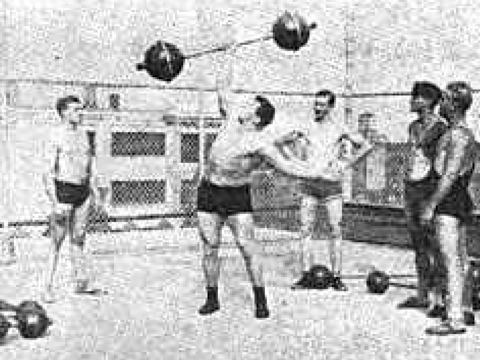
From the Hamilton's Fitness History of Powerlifting, here's Milo Steinborn working out atop Hermann's Gym in Philadelphia.
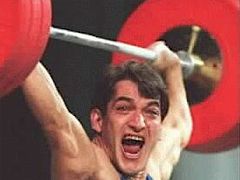 O Wow - Olympic Weightlifting on the Web. A great resource.
O Wow - Olympic Weightlifting on the Web. A great resource.
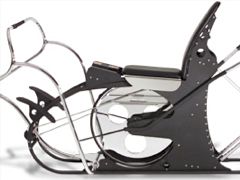 The
The 